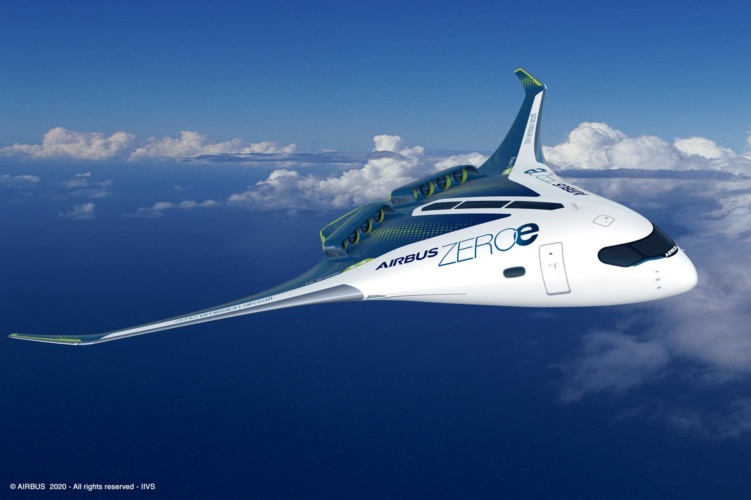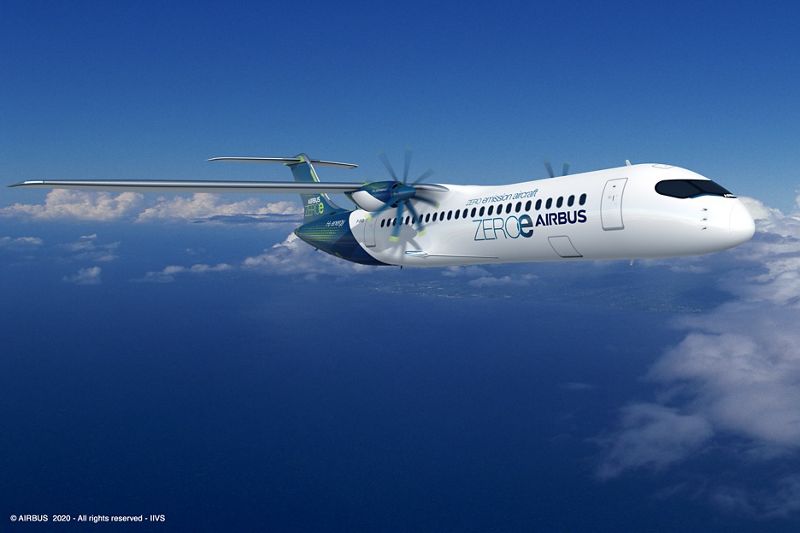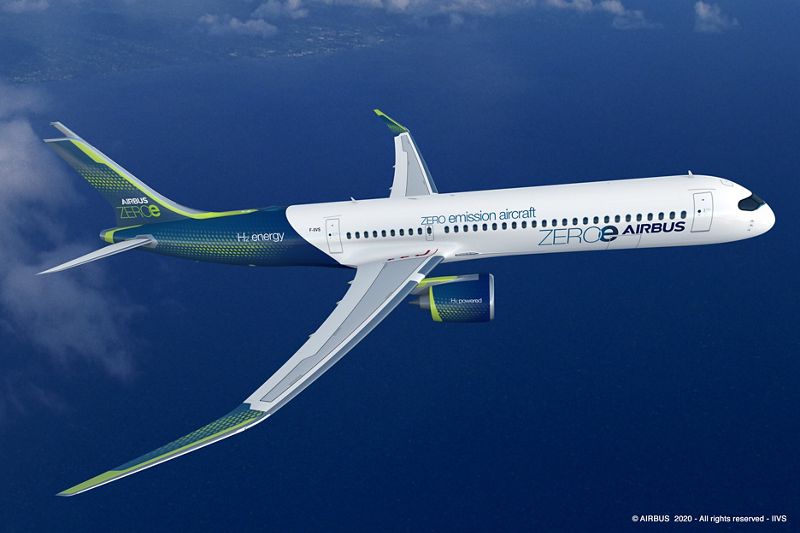
The three concepts - all codenamed “ZEROe”, and all fuelled by hydrogen -include a turbofan design, a turboprop concept and a blended-wing body. "The concepts we unveil today offer the world a glimpse of our ambition to drive a bold vision for the future of zero-emission flight,” said Guillaume Faury, Airbus CEO. “I strongly believe that the use of hydrogen - both in synthetic fuels and as a primary power source for commercial aircraft - has the potential to significantly reduce aviation's climate impact.”
In a statement detailing the proposed aircraft, Airbus explained that the turbofan concept (a 120 – 200 passenger airliner) will have a range of 2,000+ nautical miles and will be powered by a modified gas-turbine engine running on hydrogen, rather than jet fuel, through combustion. The liquid hydrogen will be stored and distributed via tanks located behind the rear pressure bulkhead.
A separate turboprop design (up to 100 passengers) will also be powered by hydrogen combustion in modified gas-turbine engines. This would be capable of traveling more than 1,000 nautical miles, said the firm.

The third concept is for a “blended-wing body” design (up to 200 passengers) in which the wings merge with the main body of the aircraft with a range similar to that of the turbofan concept. The exceptionally wide fuselage opens up multiple options for hydrogen storage and distribution, and for cabin layout.
“These concepts will help us explore and mature the design and layout of the world’s first climate-neutral, zero-emission commercial aircraft, which we aim to put into service by 2035,” said Faury. “The transition to hydrogen, as the primary power source for these concept planes, will require decisive action from the entire aviation ecosystem. Together with the support from government and industrial partners we can rise up to this challenge to scale-up renewable energy and hydrogen for the sustainable future of the aviation industry.”

MORE ON SUSTAINABLE FLIGHT FROM THE ENGINEER
Civil aviation's electric dream lives on




Project to investigate hybrid approach to titanium manufacturing
What is this a hybrid of? Superplastic forming tends to be performed slowly as otherwise the behaviour is the hot creep that typifies hot...